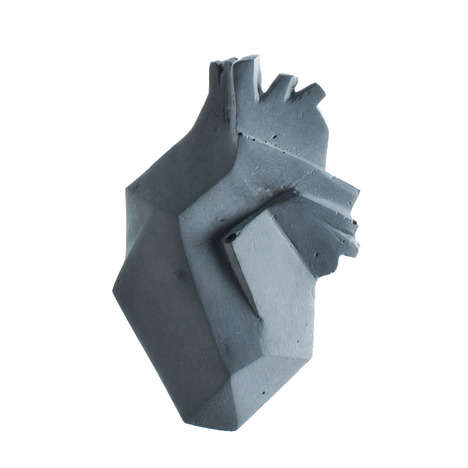In John Waters’ latest book, “Mister Know-It-All,” this image accompanies his Brutalism-o-philic chapter, “My Brutalist Dream House.” The collage is titled “Monstrosity Manor” and was created by the multi-talented Marnie Ellen Hertzler. Courtesy of Marnie Ellen Hertzler
WHAT HAVE WE COME TO EXPECT FROM JOHN WATERS?
John Waters: avowed Brutalism-o-phile.
The multiple accomplishments and talents of John Waters—simultaneously controversial and celebrated—are known world-wide. Cultural provocateurs thrive on surprising their audience—but, with John Waters, we are all so familiar with his oeuvre that we already have expectations about what his upcoming productions and pronouncements will—more-or-less—be like:
Edgy filmmaking— depend on it.
Writing and repartee that’s witty and subversively insightful— of course.
Art Direction that’s visually luscious and a bit shocking (though always fitting)— certainly.
A delightful (if occasionally disturbing) presence— yes, and that’s been well-cultivated over several decades.
Waters, no fool, is well aware of the problem:
“Somehow I became respectable. . . .I used to be despised but now I’m asked to give commencement addresses at prestigious colleges, attend career retrospectives at both the Film Society of Lincoln Center and the British Film Institute, and I even got a medal from the French government for “furthering the arts in France.” This cockeyed maturity is driving me crazy!. . . .Suddenly the worst thing that can happen to a creative person has happened to me. I am accepted. . . .How can I whine about my films being hard to see when Warner Bros. now handles many of my titles and Criterion, the classiest of all DVD distributors, is restoring some of my rudest celluloid atrocities? . . .How could that be? How?”
But John Waters has one more surprise for us: he’s come out as an avowed lover of Brutalism.
We didn’t see that one coming.
“LOVING” BRUTALISM?—YES! (BUT IN WHAT WAYS?)
The term “lovable” is rarely connected to Brutalism—-and when it is (as in the title of John Grindrod’s book, “How To Love Brutalism”) one can sense the writer’s (and maybe the reader’s) frisson at putting the words Love and Brutalism in close proximity.
When “love” is used in association with Brutalism, usually it’s not in the sense of a loving personal warmth (of the type we’d direct at, lets say, our families)—and there isn’t much “hygge”-like quality in Brutalism. So expressing “love” for Brutalism is using the word in another, more colloquial sense, for the times when one finds something compelling and intriguing—like one might say: “I love the intensity in Picasso’s ‘Guernica’ ” -or- “I love the way Beckett’s ‘Waiting for Godot’ depicts the human condition” -or- “I love Winter mountain camping at high altitudes.”
WATERS’ LATEST
So when John Waters expresses his deep love for Brutalism—and in a rather personal way—we think we’re on to his game: by embracing an unlikely combination, he’s once more grabbed the reins of the 5th Horse of the Apocalypse—nose thumbing at convention—and riding forth at full gallop.
This comes up in his book, “Mr. Know-It-All” — his recent and abundant collection of gleaming essays. In it, he covers topics as diverse as his own adventures with filmmaking, love, writing, success (or the lack of it), bad behavior, publicity, food, Andy Warhol, music, taste—and much more. Even if one’s not pre-disposed to be interested in John Water’s doings, each chapter manifests his abilities as a storyteller and thinker—so the quality of writing, and the incisiveness of his observations, makes this a book that deserves a readership which transcends his regular fan base.
An additional feature of the book is that it’s punctuated by photos, images, and ephemera from his own collection. That would be a treat for any Waters-o-phile—but even if you’re not in that blessed category, what he’s chosen has visual punch. His chapter on Brutalism is headed by a collage composed from architectural images, titled “Monstrosity Manor”—and the picture has a haunting, forbidding power. It was created by Marnie Ellen Hertzler [see top of this article.]
WATERS’ BRUTALIST DREAM
One chapter is titled “My Brutalist Dream House”—and, naturally, that’s what got our attention!
Waters considers how one needs to transcend normal, there-by-default homes (the kind most of us end-up living in)—and he goes at the topic with gusto:
In the chapter on his ideal Brutalist home, Waters mentions that the living room would feature the “cement laden” furniture of Doris Salcedo.
“You need to move beyond any kind of taste to a new level of architectural defiance. There’s only one way to start over. Brutalism.”
Waters is aware that Brutalism has had a revival, with new and sympathetic interest in its planet-spanning manifestations—and he’s not happy about that development:
“Yet these days brutalism is making a comeback. I’m distressed that this style of architecture has become cool.”
Waters asserts that Peter Chadwick’s “This Brutal World” is his “favorite coffee table book”—a most essential part of his Brutalist dream house’s book collection—and he mentions it at the climax of his essay.
Always wanting to be contra—on the outside of accepted taste—he’d prefer to contrastingly stand out, and be
“. . . .the only one left with a brutalist home. Can’t somebody stop all these I Love Brutalism websites from celebrating this once-loathed style of architecture?”
Not to be defeated by the recent emergence of Brutalism-philia, Waters proceeds along a satirical path by imagining his own Brutalist dream house—a place he calls “Monstrosity Manor.” Its forbidding, fortress-like exterior leads to threatening interiors, and he describes its uninviting parts as though they’re attractive features (at least to him.) Contrasting it to Wright’s Fallingwater, Waters characterizes his design aspirations:
“. . . .think of Monstrosity Manor as tougher. . . . Nobody’s coming over to borrow a cup of sugar. The grounds would be unforgiving even for students of architecture. . . .A No Trespassing sign would be totally redundant.”
And here’s an example of the house’s Addams-esque (in Modern mode) features—and this is perhaps the mildest of them:
“. . . .you might need to settle yourself on the stairs. . . .There’s no handrail to balance yourself, and if you’re not careful, you could trip over the sculptor Carl Andre’s twelve small copper tiles that were purposely designed to be hidden on the sides or back of the steps for your minimalist artistic danger and enjoyment.”
[Does that passage indicate that Waters was aware of Paul Rudolph’s occasional omission of stair railings in some projects? (something Rudolph did for dramatic effect, mainly in residential projects, in an era of looser building codes.) Clearly, Waters is aware of Rudolph: near the end of the essay he namechecks Rudolph, and mentions his Temple Street Garage at a peak moment in the chapter’s narrative.]
“My Brutalist Dream House” is lots of fun—especially if one is knowledgeable of the architectural references, motifs, and conventions which Waters gleefully satirizes via hyper-exaggeration. Even if his stance is not a surprise, once again the guru of gross-out has managed to stimulate and delight us.
BOOK INFORMATION AND AVAILABILITY:
TITLE: Mr. Know-It-All
AUTHOR: John Waters
PUBLISHER: Picador
PRINT FORMAT: paperback, 5-1/2 x 8-1/3 inches , 384 pages, numerous black & white illustrations
ISBN: 9781250619464
ALTERNATIVE FORMATS: hardcover and digital versions are available
PUBISHER’S WEB PAGE FOR THE BOOK: here
AMAZON PAGE: here
BARNES & NOBLE PAGE: here
IMAGE CREDITS
Photo portrait of John Waters: courtesy of PEN American Center, via Wikimedia Commons; Concrete furniture: Image by Kapelusz, courtesy of Wikimedia commons





















